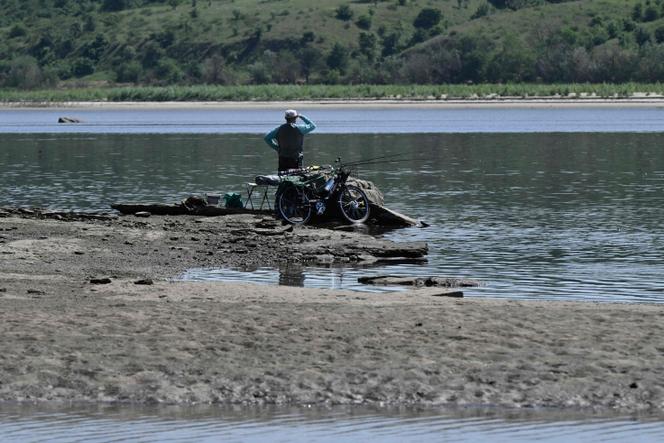
A resident of the small village of Kapoulivka, on the right bank of the immense Dnipro River that crosses Ukraine from north to south, Serhi Karnaoukh has spent his whole life fishing in the water reservoir formed by the Kakhovka hydroelectric dam. But one year ago, at dawn on June 6, 2023, an explosion was heard dozens of kilometers away. The 30-meter-high structure, built in the 1950s on the Dnipro, had just exploded, spilling the reservoir’s waters over dozens of coastal towns and villages downstream of the dam, in the Mykolaiv and Kherson regions.
Located opposite Karnaukh’s fishing cooperative, the reservoir took a few days to empty, leaving behind a barren expanse as the only landscape. “We knew that there would be no going back,” explained the 69-year-old man, on the phone from his village shelled by Russian forces deployed on the left bank of the Dnipro, in the occupied region of Zaporizhzhia. “For us, the explosion meant the end of our activity in this area.” Since then, they have survived by growing vegetables.
A year has passed since this disaster, which heavily affected the four regions of Kherson, Mykolaïv, Dnipropetrovsk and Zaporizhzhia in southern Ukraine. The causes and consequences of the destruction of the dam – occupied by Russian forces at the time – are the subject of a detailed report published on Thursday, June 6 by the Truth Hounds organization, which specializes in investigating war crimes, and the American foundation Project Expedite Justice.
The report is not just a lengthy investigation of the human, economic and environmental consequences of the reservoir’s drying up and flooding. It also accused Russia of being responsible for the dam’s destruction, something Moscow has never admitted. The document is therefore also an appeal to the International Criminal Court to recognize the events of June 6, 2023, as an “environmental war crime.”
The destruction of the dam, which caused massive flooding and displacement of the population, shocked the world in the summer of 2023. Since then, the situation in the region has stabilized. Residents are surviving despite immense losses. The report stated that, according to data from the Ukrainian government and UN, total damage caused by the disaster “exceeds $11 billion” [€10 billion].
‘A kind of semi-desert’
On the right bank, in Nikopol, a town with a pre-war population of just over 100,000, residents have been suffering for a year now from the loss of the infrastructure holding back the waters of the Dnipro. Bombing raids are a daily occurrence. The town lies directly opposite the decommissioned Zaporizhzhia nuclear power plant, some 10 kilometers away. Although authorities have finally found alternative solutions to bring running water to most towns, the economy – heavily dependent on the reservoir – is still severely affected.
You have 57.35% of this article left to read. The rest is for subscribers only.